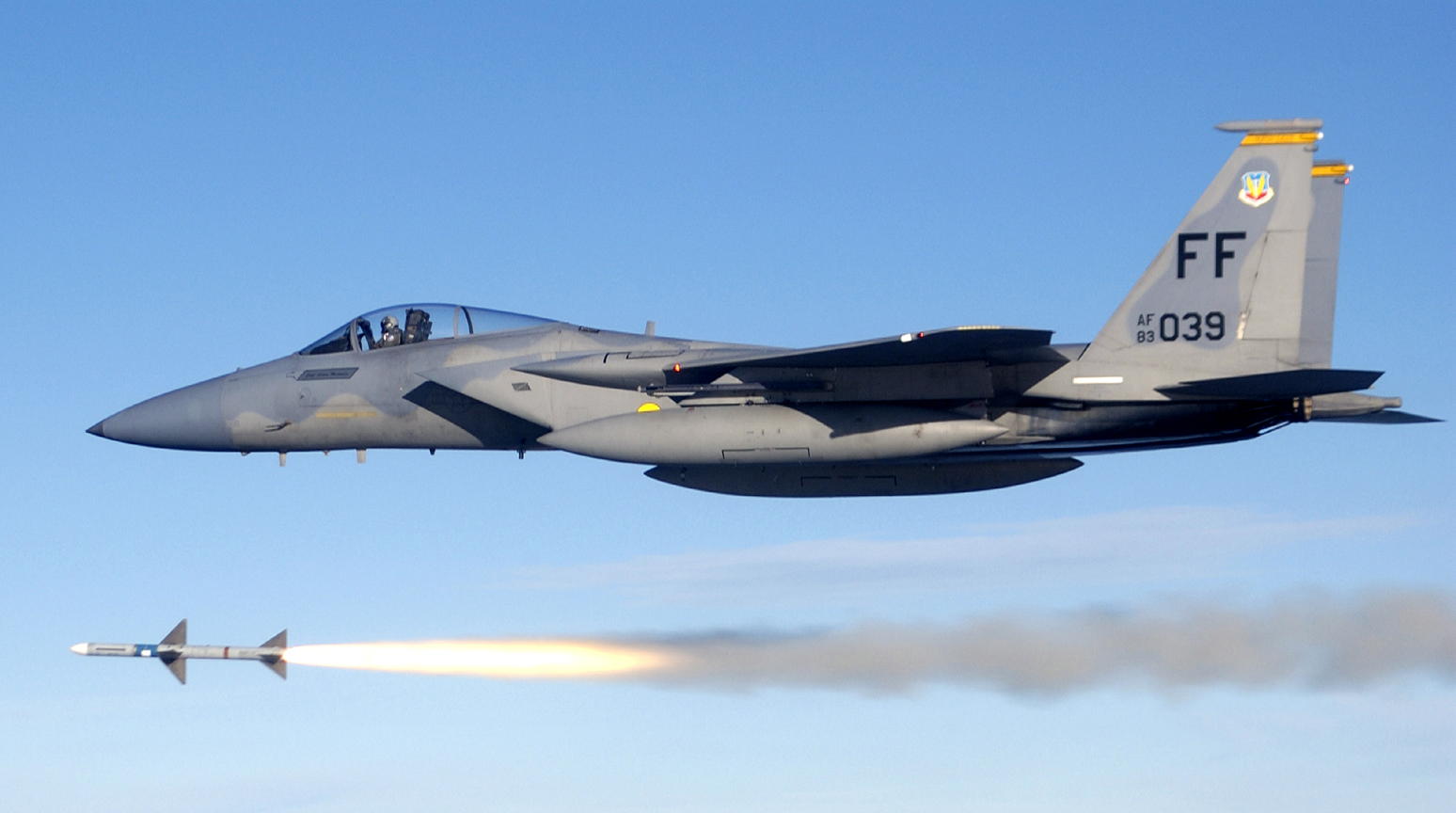The first bilateral dissimilar air combat exercise between the US Air Force (USAF) and the Indian Air Force (IAF) took place in the 2004 edition of ‘COPE India’ Field Training Exercise (FTE) at one of the oldest IAF bases, about 241 km south of Delhi in Gwalior where the IAF has its Tactics Air Combat Development Establishment.
Dissimilar air combat training, otherwise known as DACT, is simulated combat flying between two different types of aircraft.
Approximately 150 airmen from Elmendorf Air Force Base (AFB), Alaska, took part in the exercise with their F-15 Eagles. On the other hand, the IAF aircrafts participating in the exercise included the Mirage 2000s, MiG-21s, MiG-27s, and SU-30s.
However, what created the buzz around in strategic circles in India and the US was the defeat of American F-15s at the hand of MiG-21 Bison fielded by the Indian side. India’s leading paper – The Times Of India ran headlines – ‘Aging IAF Shoots Down USAF Top Guns‘
MiG-21 Bison is an upgraded version of the Russian-made baseline MIG-21 Fishbed. The upgrades feature improved avionics and armaments consisting of the French-made navigation system, Israeli-made counter electronic measures, and the Hazotron Kopyo radar capable of simultaneously tracking eight targets.

The aircraft can fire Vympel R-77 radar-guided missiles that provide beyond visual range (BVR) capability and the R-73 Archer air-to-air missile combined with helmet-mounted sight for the pilot. All this makes the aged Russian-origin jet a formidable adversary even against a much more modern and superior F-15s.
“The adversaries are better than we thought,” said Col. Mike Snodgrass, commander of the 3rd Wing at Elmendorf AFB that participated in COPE India. “And in the case of the Indian Air Force, both their training and some of their equipment was better than we anticipated.”
IAF Pilots Excel
The US participants said that the Indian pilots demonstrated innovation and flexibility in their tactics while admitting that they came into the exercise underrating the training and tactics of the pilots they faced.
“The outcome of the exercise boils down to [the fact that] they ran tactics that were more advanced than we expected,” said Maj. Mark A. Snowden, the 3rd Wing’s chief of air-to-air tactics who was a participant in the exercise.
“India had developed its air tactics somewhat in a vacuum. They had done some training with the French that we knew about, but we did not expect them to be a very well-trained air force. That was silly.
Indian air force planners never reinforced failure or repeated tactics that the U.S. easily repelled but rather changed tactics as opportunities arose.
“They could come up with a game plan, but if it wasn’t working they would call an audible and change [tactics in flight],” Snowden added.
The IAF pilots at Gwalior airbase operated Mig-21s as fighter escorts and MiG-27 Floggers as strike aircraft.
Snowden, while further describing the tactics used by the Indian pilots, said that they would analyze what their opponents were doing and then try something else like bringing the strikers in high or low and moving them around so that the U.S. pilots could never anticipate from day to day what they were going to see.
“They made good decisions about when to bring their strikers in. The MiG-21s would be embedded with a Flogger for integral protection. There was a data link between the Flankers that was used to pass information. [Using all their assets,] they built a very good [radar] picture of what we were doing and were able to make good decisions about when to roll [their aircraft] in and out.”, Snowden said.
Fight Despite Limitations
According to Vinod Patney, retired Indian Air Force Marshal, and former vice chief of staff, the success of Indian Pilots in COPE India exercises can be attributed to the skills of IAF pilots combined with those of the Indian ground crews
“We’re not talking about a single aircraft. We’re talking about the overall infrastructure, the command and control systems, the radar on the ground and in the air, the technical crew on the ground, and how you maximize that infrastructure. This is where the learning curve takes place,” said Patney.
However, according to some of the pilots from the 3rd Wing who had participated there were several limitations imposed on the American side that reduced the chances of victory of the Eagle drivers against the Indian fighters.
Firstly, none of the six 3rd Wing F-15Cs was equipped with the newest long-range, Raytheon APG-63(V)2 active electronically scanned array (AESA) radars, designed to find small and stealthy targets.
Secondly, at India’s request, the U.S. agreed to mock combat at 3-to-1 odds which in typical air engagements involved 6 Eagles up against 18 IAF aircraft without the use of simulated long-range, radar-guided AIM-120 Amraams due to the Indian request.
The initial tactic is to run a wall with all four F-15s up front which would run well only when the long-range missiles and AESA radar are in play.
It is important to remember that the US doctrine of warfare is centered around the technological edge as an equalizer to numerical strength and in the case of aerial warfare it would involve detecting the enemy at faraway ranges and destroying it before it itself gets detected.
There is no need for a dogfight if a win is possible from afar.
- Written by Tanmay Kadam/EurAsian Times Desk
- Contact the author at etdesk@eurasiantimes.com
- Follow EurAsian Times on Google News